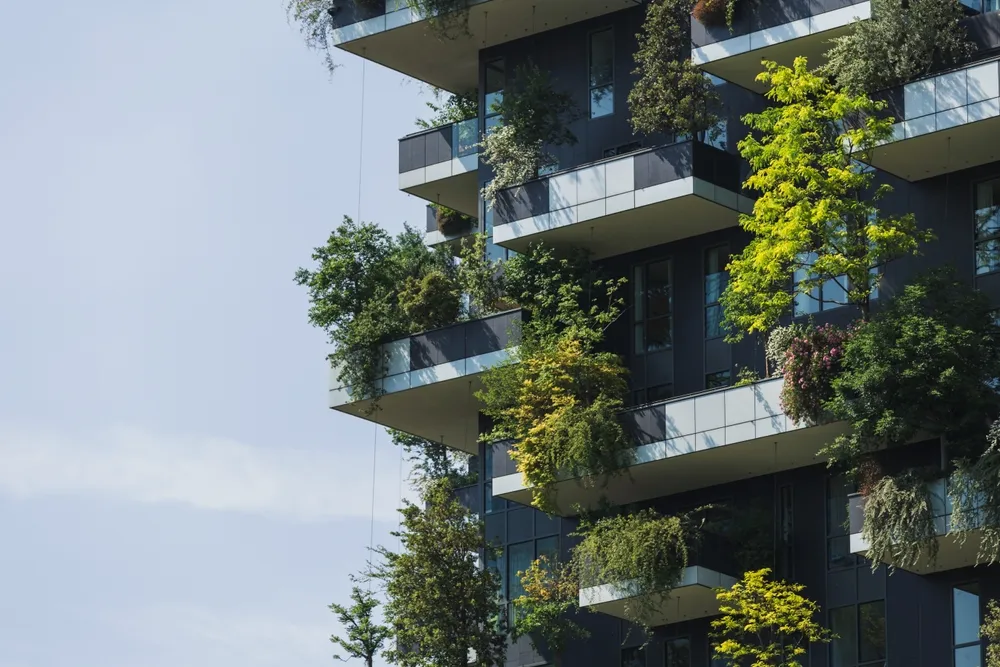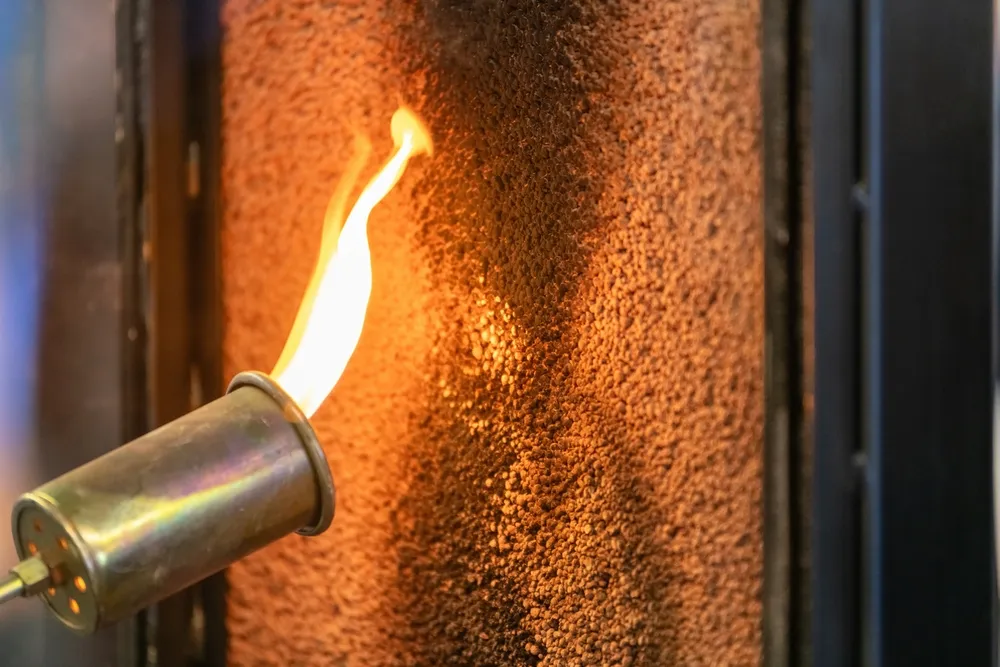Balancing energy efficiency with the highest level of fire safety has become one of the most complex challenges in modern construction. As building designs push boundaries with sleek facades, advanced insulation and sustainable materials, there is a constant tension between saving energy and ensuring that safety systems are not compromised. Our team at IECC considers this balance as more than a technical consideration but a responsibility to create spaces that are safe, compliant and designed for the future. While clients anticipate sustainable solutions, they also depend on us to guarantee safety at all times.
The dilemma lies in the fact that energy efficiency often demands airtightness, insulation and cladding systems. If these are not carefully managed, they can unintentionally create vulnerabilities during a fire. Passive fire protection is also designed to contain flames, smoke and heat, which means that any material choice must withstand both the push for sustainability and the realities of a fire emergency. Striking this balance requires close collaboration between different specialists, strict adherence to codes and a willingness to innovate with new products.

Passive fire systems have a direct influence on how well a building performs when it comes to energy use. Fire barriers, sealing product and compartmentation all affect airflow and thermal performance. These can either improve or reduce energy efficiency depending on how they are integrated. For designers and contractors, the challenge is not only selecting the right products but also ensuring they align with both performance targets and safety requirements. Without proper integration, the entire balance between efficiency and protection can be lost.
Air leakage is one of the main ways buildings lose energy, but sealing gaps for efficiency must not undermine fire performance. Achieving the right outcome requires products that meet both airtightness and fire rating standards, ensuring the two objectives complement each other.
Insulation plays a dual role in enhancing energy performance and contributing to passive fire strategies when designed correctly. The choice of insulation materials directly impacts both energy savings and fire resistance levels, making it essential to specify products wisely.
Where pipes, cables and ducts pass through fire-rated walls, the treatment of these penetrations influences both safety and energy outcomes. Improper sealing can lead to energy leakage as well as the failure of fire compartments.
Modern buildings are often wrapped in complex systems of insulation and cladding, with fire barriers hidden within. Each of these components contributes differently to sustainability and safety, yet all must work together seamlessly. A lack of integration creates risks, not only in terms of regulatory non-compliance but also in potential fire events that could expose hidden weaknesses. Ensuring compatibility requires detailed design and rigors product selection.
Insulation materials need to serve two roles: improving thermal performance and resisting fire spread. Choosing the wrong product can deliver energy gains at the expense of safety, which is unacceptable for responsible construction.
Cladding systems impact both aesthetics and energy efficiency but are also under scrutiny for fire performance. Safe choices must account for how the system performs under both normal and emergency conditions.
Hidden within external wall systems, fire barriers are essential in stopping fire spread while also influencing air movement and energy outcomes. Their placement and quality are critical to a safe and efficient design.
When energy goals and safety measures are handled separately, buildings risk falling into costly and dangerous pitfalls. Too often, sustainability strategies are implemented without considering fire performance, or fire compliance is treated as a box-ticking exercise without reference to energy outcomes. These oversights lead to compromised designs that put occupants at risk while reducing the effectiveness of efficiency targets. Avoiding these mistakes requires a coordinated approach from the start.
Projects can become so focused on achieving sustainability ratings that fire safety takes a back seat. This leads to materials and systems being prioritised for efficiency alone, creating hidden risks.
Not all products marketed as “sustainable” are tested thoroughly for fire performance, leading to unsafe choices. Relying on unverified claims can create dangerous vulnerabilities.
Fire safety and energy efficiency rely on precise installation, which demands coordination across all trades on-site. Lack of communication leads to gaps and compromised systems.
No single discipline can manage the balance between energy efficiency and passive fire protection alone. Fire specialists and sustainability consultants bring different expertise that must be combined early in the design process. Collaboration allows both performance outcomes to be achieved without compromise while also meeting regulatory expectations. Projects that integrate both perspectives from the start tend to be safer, more efficient and more cost-effective.
Engaging fire and sustainability consultants early allows risks and opportunities to be identified before construction begins. This prevents conflicts and ensures smoother compliance pathways.
Both fire specialists and sustainability consultants must work towards shared outcomes rather than competing priorities. Defining these goals clearly helps align decision-making.
Even the best designs fail without proper installation and oversight. Joint supervision ensures that both safety and efficiency measures are followed correctly on-site.

The construction market is rapidly developing new products designed to address both fire performance and sustainability in one. These innovations allow contractors to specify solutions that reduce risk while also achieving environmental targets. With more stringent codes and client expectations, these products are quickly becoming essential for modern building projects.
Insulation products are now being engineered to deliver both energy performance and fire resistance in one application. This simplifies specification and reduces risk of conflict.
Sealants and coatings are now available that meet both fire and airtightness requirements. These products support better overall building performance.
New barrier technologies incorporate lightweight, sustainable materials that also achieve high fire ratings. These products make compliance easier without compromising energy performance.
Regulatory frameworks are evolving to reflect the need for both sustainability and safety in building design. Codes are increasingly merging requirements for energy performance with fire protection standards, demanding a more integrated approach. This trend places new responsibilities on contractors but also provides clearer pathways to compliance. Staying ahead of these changes is essential for long-term project success.
Modern codes are beginning to address energy and fire performance together rather than separately. This reduces ambiguity but requires careful interpretation.
Authorities are demanding more rigors testing of materials for both energy and fire properties. This raises the quality of available products but also increases scrutiny.
While integrated codes are positive, they also create challenges for contractors unfamiliar with combined requirements. Extra planning and knowledge are necessary to avoid delays.
Balancing energy efficiency and passive fire protection is not a matter of choosing one over the other but creating systems where both can thrive. For us at IECC, it means leading projects with foresight, integrating sustainability with safety and always ensuring that client expectations are met without compromise. Every decision from insulation choices to fire barriers, has a ripple effect across performance and safety, which is why careful collaboration and product selection matter so much.
The construction industry is moving towards a future where sustainability and safety are no longer separate goals but parts of the same solution. By embracing collaboration, new technologies and evolving codes, contractors and consultants can deliver buildings that stand strong in both performance and protection. For those of us committed to this balance, it’s about more than compliance, building trust, protecting people and shaping spaces that last.